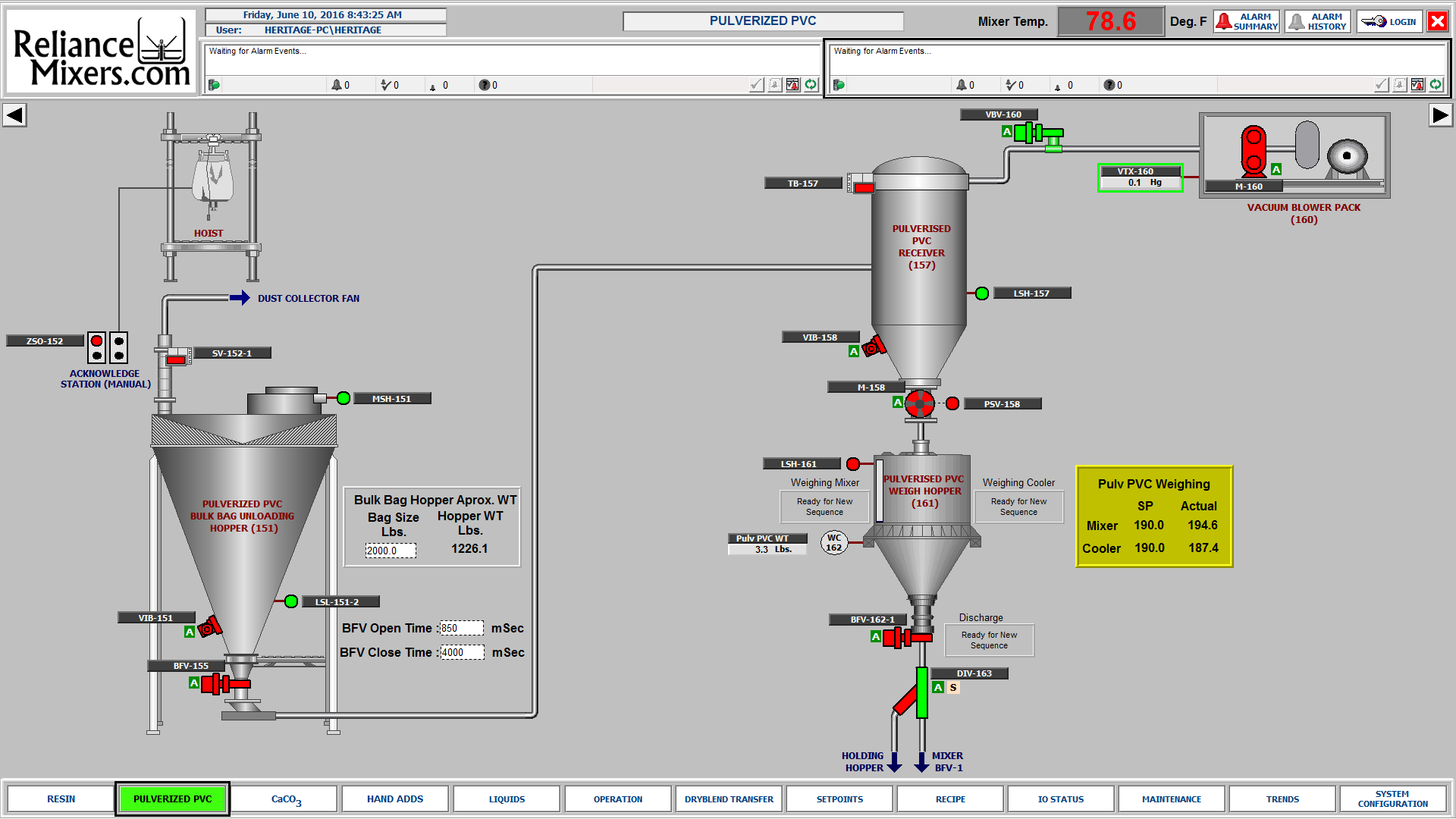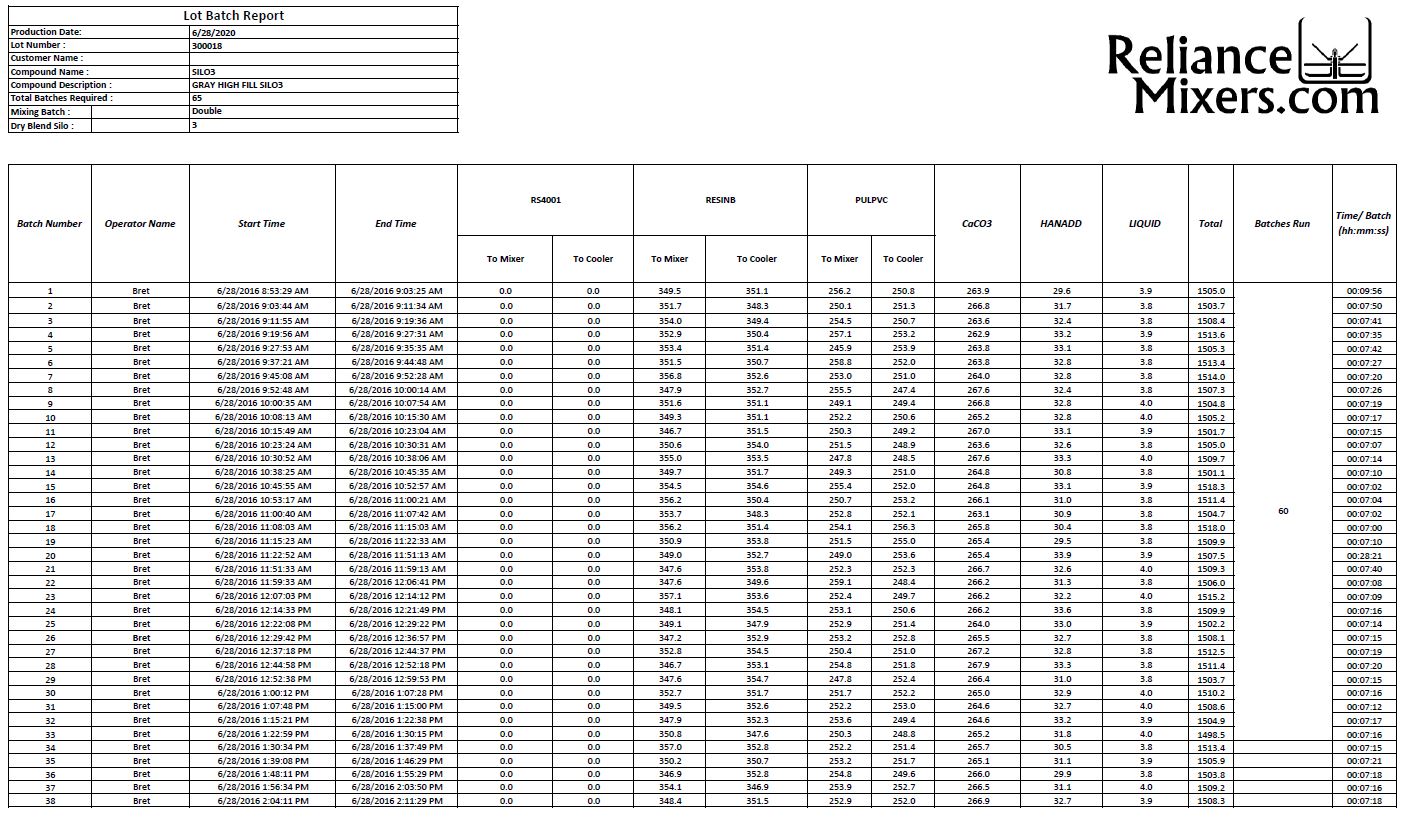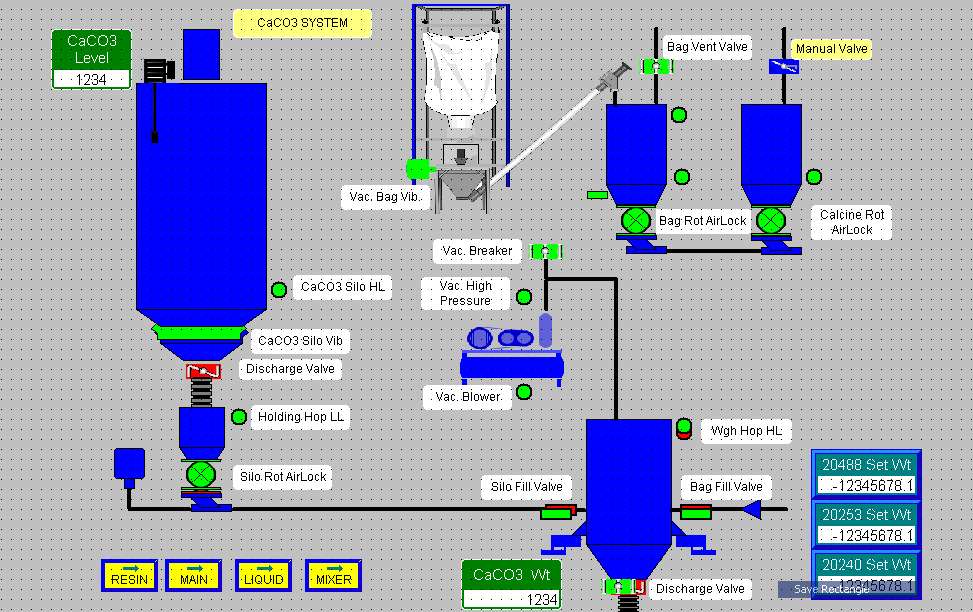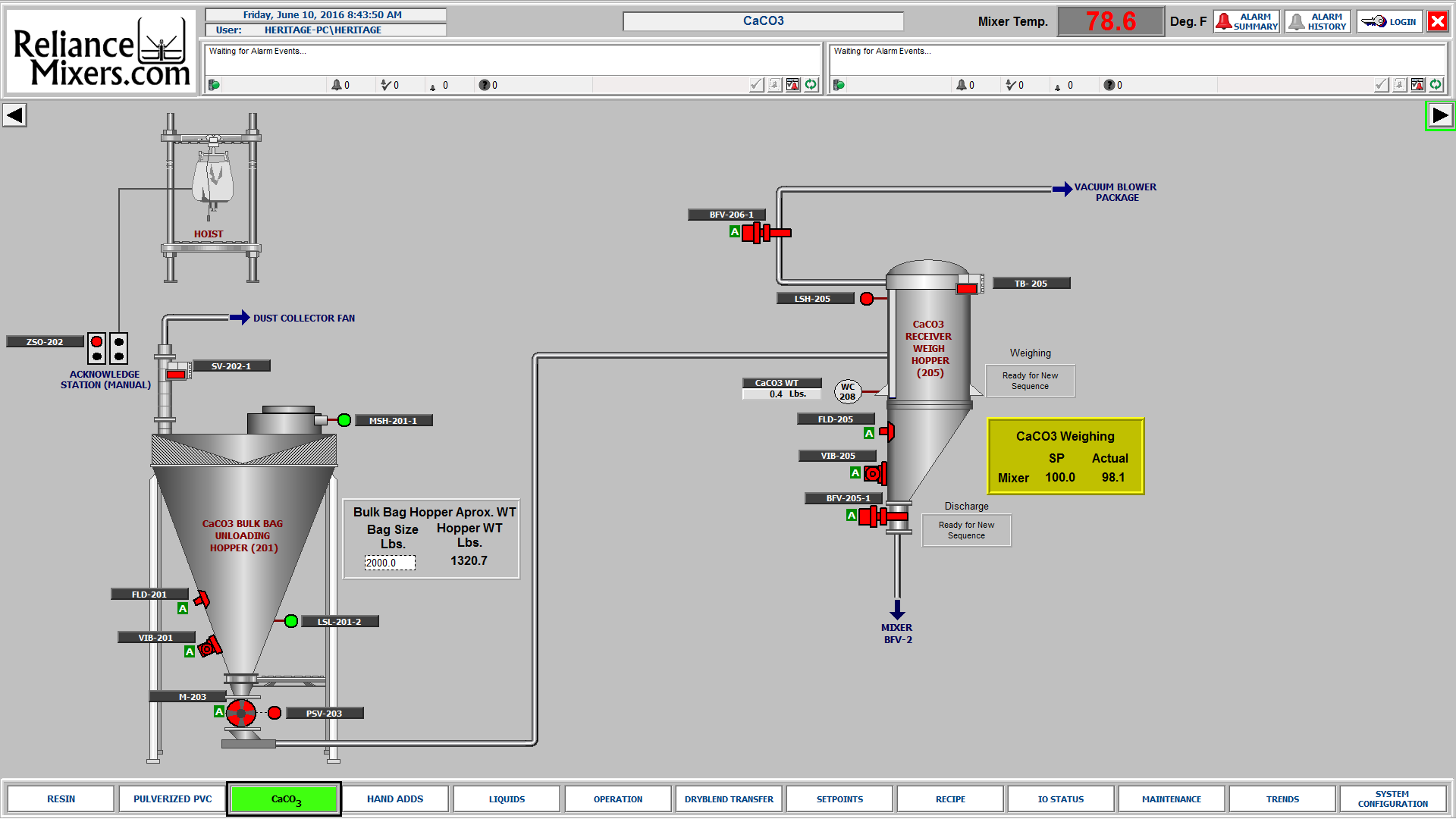Control Systems
Control Systems
Control System: Reliance Industries, Inc. has been working with its costumers to automate their operations while providing accurate information in reports and real-time data. Information is vital in order to make Long-Term and Short-Term production decisions.
Reliance Blending Systems provides the tools to gather all the details that are necessary for management to make the proper choices for their plant’s growth. We design, manufacture, install, and service all our systems from A to Z. In order for us to succeed our customers must too.
Control System : Weighing & Conveying Systems
Automating the weighing and conveying of bulk materials is becoming more of a requirement in blending production facilities. Ingredients that arrived at the plant must be fed into the production system via some sort of conveyance lines and weighed to accurate levels for production. Whether these come via rail car, tanker, bulk bags, etc.
Material system
Bringing in materials from silos and tanks requires properly sized lines, blowers, valves, transitions, and accessories. This is because if components are not sized right the overall conveying system can drastically reduce your output from your system.
High levels of consistency and quality
As material flows into Scale Hoppers, accurate weights and volumes must be achieved in order to maintain high levels of consistency and quality. Therefore, Isolation valves, load cells, air transducers, and other special instrumentation must be in place.
Control System : Report Generation and Remote Assistance
One of the main advantages of a Controls Package is its ability to generate reports and integrate with existing plant systems. When information is fed from your Plants Manufacturing Systems into your Office’s Business Information Systems, real-time decisions and analysis can be made.
Retrofit and System Upgradation
Many aging Blending Systems can be upgraded from the technology that was used in the ’80s and ’90s when they were first created. Most of the hardware and software in these systems are out of date and not supported by the OEM.
When giving a Face-Lift to existing Systems, upgrades on basic components can increase reliability and production throughput. In addition, this can also eliminate bottlenecks that have developed over time.




